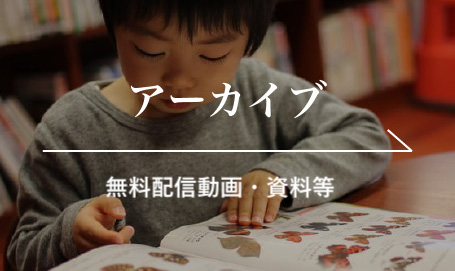< VOLUME 53, No.3 >
Akiko Yuasa. The Nature
of “Cheating” Arising in the Game Playing of Young Children and the
Transformation of Consciousness Arising from Mutual Interactions with Friends:
Episode Analysis from Longitudinal Observation.
Research on Early Childhood
Care and Education in Japan, 2015, 53(3),
248-260.
This research focused on “cheating” arising in
a game with rules, and elucidated behavioral transformative pro- cesses from the behavioral records of young children who
had been continuously observed to cheat. How mutual interaction is connected to
primary factors that promote a transformation in the consciousness of the young
children was examined. We observed that children experience the following four
stages: (1) cheating to bring about a desired situation becomes suspected by
surrounding young children due to repetition over a given period; (2) the
surrounding young children question and feel discontent towards the cheating,
and begin to point it out; (3) the cheater has this pointed out to them, and
has the opportunity to consider the meaning and consequences of the actions;
(4) the cheating behavior transforms gradually, not suddenly.
Keywords: cheating, four-year-old and five-year-old children, game, episodic
analysis
—————–
Takafumi Hokii. Establishment
of Collaborative Activities among Young Children: An Analysis Using the Concept
of Mentorship.
Research on Early Childhood
Care and Education in Japan, 2015, 53(3),
261-272.
This study analyzes the
establishment process of collaborative activities among young children from the
daily social relationships perspective. The activities of five-year-old
children in kindergarten were qualitatively ana- lyzed using the concept of
“mentorship” advocated by Ripley and others. The results were as follows: (1)
children participate in collaborative activities as a “peer group” that
comprises of children who are fixed members in the play circle; (2) in peer
groups, even if the goal of that activity is not shared by each child in the
peer group, col- laboration is unexpectedly realized based on the interests of
other children; and (3) the “carefree atmosphere” within the peer group makes
interaction easier and leads to continuity in collaborative activities.
Keywords: young children, collaborative
activity, relationship, mentorship
, peer group
—————–
Sachie Suizu and Hiroo
Matsumoto. Kindergarten Teacher Interventions in Peer Conflict among Young Children:
with a Focus on the Role of ‘Nagomase’ Interventions.
Research on Early Childhood
Care and Education in Japan, 2015, 53(3),
273-283.
Th study examined the role of
kindergarten teachers’ ‘nagomase’ interventions during confl among four-year-
old children. Such interventions are not direct instructions for conflict
resolution but indirect suggestions to the children (e.g. humor, physical
contact & playing). In particular, we focused on peer interactions between
children and teachers and analyzed these by an interpretive perspective based
on the observational data from the kindergartens. Th main fi are as follows: 1)
such interventions during peer confl function to break the ice, so that
children are encouraged to look back on their confl and recognize their errors;
2) such interventions after peer confl func- tion to change the situation, so
that the interventions contribute to children having continued peer interaction
after the conflict.
Keywords: early childhood, peer
conflict, teacher intervention
—————–
Akari Tanaka. Effects of
Preschool Teachers’ Refraining from Getting Involved in 3 to 4-Year-Olds’ Emotion-Evoking
Scenes.
Research on Early Childhood
Care and Education in Japan, 2015, 53(3),
284-295.
To explore preschool
teachers’ roles in child development, this study examined preschool teachers’
behaviors when children stumbled. Data were obtained from naturalistic
observation and interviews. Teachers’ behaviors over the 2-year period
(3-year-olds & 4-year-olds) were observed, as were interactions between
twenty-six chil- dren and their teacher at a preschool. Results revealed that
the teacher occasionally refrained from getting in- volved with 4-year-olds out
of consideration for the development of the children’s emotions. Additional
analysis of the effects of teachers’ behaviors showed that these behaviors
could be classified under the following types: respecting the children’s
feelings, helping the children to develop their own strengths, and building
interpersonal relationships between the children. I therefore conclude that
teachers’ refraining from getting involved enables the children to confront
their own feelings, and offers them an opportunity to engage in emotional
regulation.
Keywords: Observational method, Emotion
regulation, Preschool teacher, 3 to
4-year-olds
—————–
Takako Kawabe. What Type
of Children’s Play Ensures Development and Growth? : Attention should be Given
to the “Context of Play”.
Research on Early Childhood
Care and Education in Japan, 2015, 53(3),
296-305.
The goal of this report is to
show that when considering child growth and development, it is necessary to un-
derstand the cultural practices of play, and not only from a relational
perspective.
Through cases where they
interact with their surrounding environments, children are able to enhance the
po- tential of those environments while creating the theme of the play and
never ceasing to innovate the context of the play. This type of process ensures
a high-quality type of play. It is important for educators to understand the
subject and context of play and think of how to provide proper support.
Keywords: Play, Quality of play,
Understanding children, Subject
of play, Context of play
—————–









